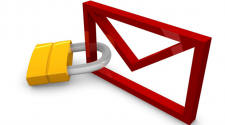There are 5 types of spam which are the most common, some of these are sent directly by the user without knowing that they are sending spam, so it must be identified if the emails received are true or not.
Spam messages can have the following contents:
1-Rumors or hoaxes (Hoax)
As the name implies, they are false stories. Stories of a child who is going to have a transplant or that the entire Amazon will be destroyed. These messages are created so that the user believes that they are true and resends the e-mail, but in reality they are nothing more than rumors. If you receive messages like this, you know what to do ...
2- Chains (chain letters)
Son mensajes que terminan diciendo “Envíe este mensaje a 10 personas en los próximos 10 minutos y tendrás buena suerte, en caso contrario tendrás mala suerte de por vida”. When you receive an email of this type, just delete it.
3- Propaganda.
They offer a product at a much lower price than the real one and you are asked to access a link found in the e-mail. These types of messages can take you to a website with immoral content, to malicious programs or to links with more advertisements. Never access these types of links and go to the delete button.
4- Scams (scam)
They are false advertisements. They are the typical emails that offer the wonder of working at home, miraculous opportunities for employment or study, including easy access to financial loans. None of this is real.
5- Scams (phising)
The most subtle way. Spammers (creators of spam), create an e-mail that informs you that your documents are invalid or that your registration in a virtual store (which you may never have accessed) is out of date, so when you click on the link of the e-mail you are automatically taken to a page to update that data. At that point, is when your data is stolen from a cloned page. Phishing is widely used to steal data and use it. I mean, It is one of the most subtle but also most dangerous tactics on the Internet.














No Comment